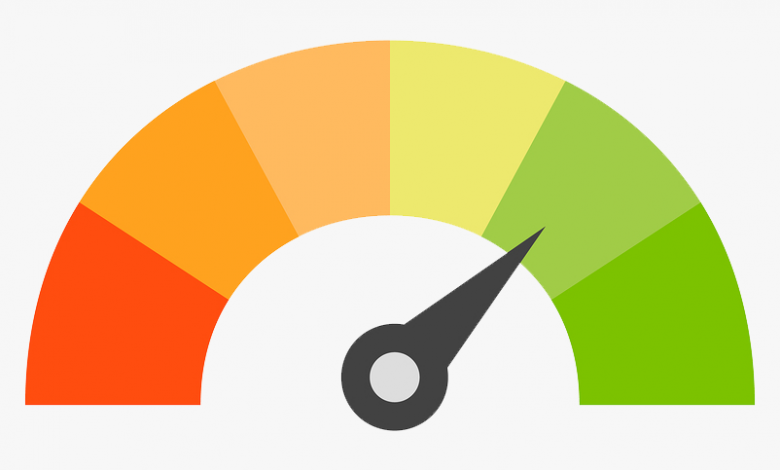The car loan: better understand it to use it well

Many young drivers use their savings to afford their first car. This is a great way to avoid debt and learn to manage your money well. When the time comes to buy a new or more expensive vehicle, it is advisable to use credit to facilitate the transaction. Why, and above all, how to use auto credit to your advantage to get your hands on your next vehicle? You will find the answers to your questions in this article.
How does car financing work?
Personal loan and car loan: what are the differences?
What are the particularities of a car loan? There are a few things that set these two forms of credit apart. One of the distinctions is that the car loan is obtained directly from the merchant and the personal loan from a financial institution. Another important difference is the interest rate on financing. Rates are lower for a car loan because it is an installment sale contract (CVT) where the vehicle serves as collateral for the amount lent. It is therefore particularly advantageous to use this form of credit when purchasing a more expensive vehicle directly at the point of sale. In addition, the credit application process is taken care of by the merchant. Keep in mind that it is often at dealerships that you will find the most competitive interest rates.
Also, note that an auto loan only takes effect upon delivery. It is only when the vehicle is in your hands and by your requests that you must start paying your monthly payments. To obtain a personal loan, you must approach your financial institution and if it is accepted, the loan will be opened and the amount will be transferred to your bank account. The loan will therefore be activated from this moment and at the same time, the repayment process will begin.
Why choose a personal loan?
Personal credit is more appropriate in certain situations. For example when you buy a vehicle from an individual. You will have to go through your financial institution to obtain a personal loan based on the negotiated amount. A personal loan will also be your best option when you buy a vehicle under $5,000 from a merchant or dealership. Generally, auto credit is offered at the dealership for financing over $5,000. It is therefore advisable to take out a personal loan for the purchase of a car at a low price or when buying from an individual.
What are the steps for applying for a car loan?
Many people have never done business with a dealership. So what happens when you walk through the doors and choose a vehicle? The salesperson will take you to the Commercial Manager’s (F&I) office. How will it be next? Well, here’s how the situation can play out 1 :
1) The merchant will ask you how you want to pay for your car. Some people pay cash, but most buyers need a loan over a fixed period. The merchant will make you an offer. This is when you need to negotiate terms that you are comfortable with.
2) He will then contact a financial institution to offer you a loan. Do not hesitate to let your merchant know which financial institution you would like to do business with. And if you are a Desjardins member, you can benefit from a 0.30% discount on the interest rate of your financing at the merchant or the dealership.
3) The financial institution will check your credit file. Any lender doing a credit analysis for a large transaction will need to know your level of debt and your ability to make payments. The financial institution will have access to this information in your credit report 2.
4) You will sign the contract. This step is of course conditional on the acceptance of your loan application. It is important, before signing, to confirm the information that appears in the contract, such as name, address, loan amount, etc. The terms of payment can be changed later by the financial institution, the name of the borrower, hardly.
5) This will be the start of the refund. Once the contract has been signed and the vehicle is in hand, you will then start your payments according to the frequency chosen by the merchant (every week, every two weeks, or every month).
Mistakes to avoid to maintain a good credit score
How to make sure to keep an excellent credit score? You must first know the variables involved in calculating the score: payment history, level of indebtedness about credit rating, credit applications, types of credit used, experience credit, and bankruptcy history 3 . You should use these variables to your advantage, which means:
1) Avoid making multiple credit applications. This is a still poorly understood aspect of credit. Multiple credit applications or one denied credit application will lower your score and make subsequent applications more difficult. Shop around for offers from different dealerships, but only apply for credit when you’re ready to buy.
2) Don’t aim beyond your means. Establish a car budget that takes into account the term of the loan, the total price of the vehicle, the amount of the monthly payments, the interest rate, the credit costs (insurance products, costs related to the Register of personal and movable real rights (RDPRM), etc.) as well as maintenance costs. There are several expenses associated with buying and financing a vehicle. Be sure to calculate all the variables to avoid unpleasant surprises and to fully understand the scope of this financial commitment.
3) Do not accumulate debts. The debt level is not only calculated based on the total amount of your debts, but also the number of debts you have because each of them accrues interest. Be sure to consider this factor before buying on credit. Hoarding credit cards is a common way to fall into this trap. Limiting yourself to one card is a winning choice to maintain your good credit score.
How can I build or improve my credit file?
It’s inevitable, that a bad credit score will limit your options and could increase the interest rate when shopping for a vehicle. However, there are ways to fix it. Good credit is built. Here are a few ways to get there.
1) Buy on credit. Good credit is not an absence of debt but has demonstrated the ability to manage it. Using a credit card responsibly by paying, for example, the full balance each month is an easy way to build or improve your score.
2) Get help with a first loan. Bringing in a co-applicant – either a family member or a spouse with a good credit history – will facilitate the approval of the application and will allow you later to build your credit file. In addition, for a first loan, if you do not have a co-applicant, make sure you have a cash amount (10% to 20% of the total amount) to apply to the transaction to facilitate financing approval. Opting for a shorter term can also help.
3) Build good payment clothes. Easy to say! It’s all about strategically managing your budget. How many bills do you have to pay? Do you have the financial capacity to pay them each month? Can you cut something in your expenses? An invoice refunded within thirty days will play in favor of your credit file. 4 If you exceed this period, it will gradually be affected.
4) Be patient! Large debt in a bank account or on a credit card can seem daunting, but see it as an opportunity to build credit. Demonstrating the ability to pay consistently over a long period is a great way to get your way. There’s no quick fix for building a good credit rating in a short time, and opening multiple accounts and signing up for multiple cards puts a damper on your record.
Factors to consider when applying for a car loan
Congratulations, you have decided to get yourself a new car! What do you now need to keep in mind when applying for a loan? Be sure to consider the following factors.
Just do one. Shop around, do as many test drives as you need to make a choice you’re comfortable with, compare dealer offers, etc. Remember, however, to apply for credit only once when you are ready to buy. Applying for credit at multiple merchants could negatively affect your score even if accepted, as the number of applications itself is part of the calculation.
Calculate the total amount to be paid. The monthly payments on a seven-year term will of course be lower than on a five-year term, but will you end up paying more if you factor in the interest? Calculate the total amount payable based on your term, including interest, and then you can make an informed financing decision. We invite you to use our scenario calculator provided for this purpose.
Choose payment terms you’re comfortable with. At the transaction stage, it is possible to choose a payment interval: every week, every two weeks, or every month, for example. Consider your budget and keep in mind that the future often holds unforeseen events. The idea of paying off your car loan quickly is appealing, but paying it comfortably is a doubly winning proposition: you’ll have the flexibility to make other purchases and build your credit at the same time!




